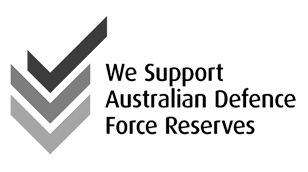
Most business owners and managers understand the importance of ensuring employees and others feel safe and well cared for in their workplace. Unfortunately however, workplace deaths and serious injuries continue to appear in news reports on a regular basis. There are many other workplace complaints such as minor injuries, hearing loss, chemical injuries, bullying and sexual harassment that are not always considered ‘newsworthy’ but are obviously still very important health and safety issues in the workplace.
Work Health and Safety Act, 2012
In South Australia the Work Health and Safety Act, 2012 sets out the framework for the health, safety and welfare of persons at work.
Section 3 sets out the object of the Act. That section says in part:
“The main object of this Act is to provide for a balanced and nationally consistent framework to secure the health and safety of workers and workplaces by protecting workers and other persons against harm to their health, safety and welfare through the elimination or minimisation of risks arising from work or from specified types of substances or plant”
The Regulator – Safework SA
The Act establishes Safework SA as South Australia’s workplace health and safety regulator. The role of Safework SA is to provide education and advice on work health and safety and to provide the framework for licensing and registration for workers and plant. Safework SA also investigates workplace accidents and enforces workplace safety laws in South Australia.
Safework SA has the power to enter businesses, obtain search warrants and to seize documents and other evidence. Safework inspectors can issue infringement notices, improvement and prohibition orders.
Primary Obligation – Person Conducting a Business or Undertaking
Under the provisions of the Act a person conducting a business or undertaking (“PCBU”) has the primary obligation to ensure the health, safety and well-being of workers, contractors, clients, visitors and volunteers in the workplace. The PCBU must provide a safe work environment which includes:
- Safe work practices set out in policies and procedures (a detailed “Health and Safety Manual” for the workplace would be a good start);
- An environment free of discrimination, harassment and bullying; and
- Safe plant and equipment.
A PCBU should also make sure all employees, contractors and visitors to a business receive an induction into the business which should include:
- Instruction and training to ensure they are able to safely carry out their assigned tasks;
- Appropriate safety equipment and instruction on how to use that equipment; and
- Introducing the worker to the Health and Safety Manual and other relevant safety policies and procedures.
Managers and Others Also Responsible
Under the Act others also have responsibility for the safety of employees, contractors and visitors to a business. These include anyone with management or control of a workplace, manufacturers of plant and equipment and others within a workplace. It is a criminal offence to breach work health and safety duties. Maximum financial penalties are significant. A court can order a term of imprisonment of up to 5 years for individuals where the offence is considered reckless.
Codes of Practice
There are Codes of Practice which provide guidance for measures to be taken by employers to improve health and safety and to prevent workplace injuries. There are Codes for a number of different areas and include:
- First aid in the workplace;
- Hazardous manual tasks;
- How to manage work health and safety risks;
- Labelling of workplace hazardous chemicals
- Managing electrical risks in the workplace;
- Managing noise and preventing hearing loss in the workplace;
- Managing risks of hazardous chemicals in the workplace;
- Managing the risks of plant in the workplace;
- Managing the work environment and facilities; and
- Work health and safety consultation, co-operation and co-ordination
Workers Also Responsible
Workers also have a legal responsibility for their own health and safety and to ensure they do not place others in the workplace at risk. Employees and others in the workplace should make sure they have received proper training and instruction and:
- Follow safety instructions;
- Keep work areas free of hazards;
- Stop work if they feel unwell or become aware of an unsafe situation;
- Do not take drugs or alcohol before or at work; and
- Treat others in the workplace with respect.
For further information, contact the employment lawyers at Beger & Co. You can also join our mailing list to receive updates and legal advice on current issues.







